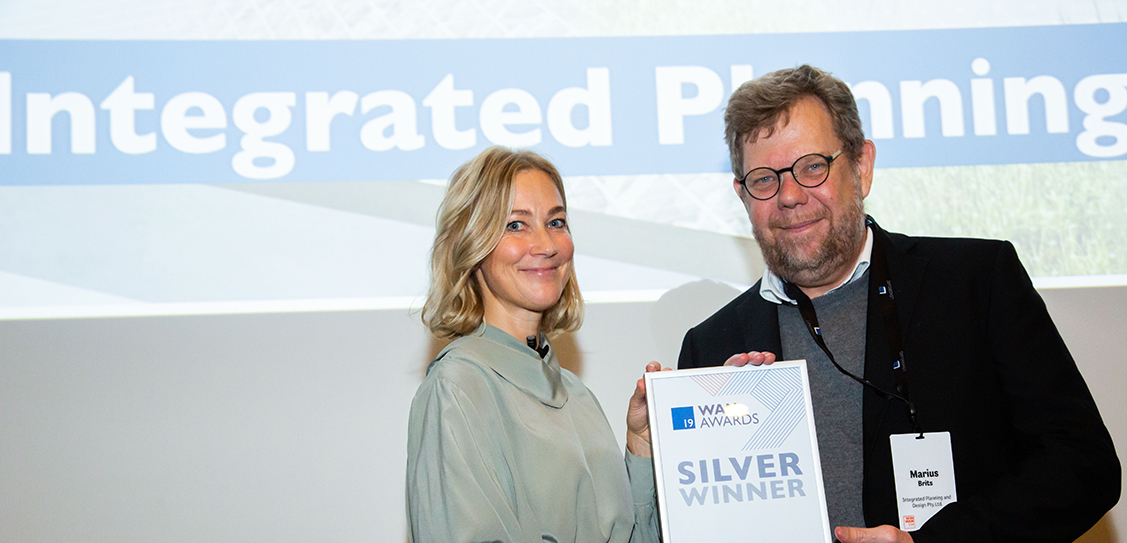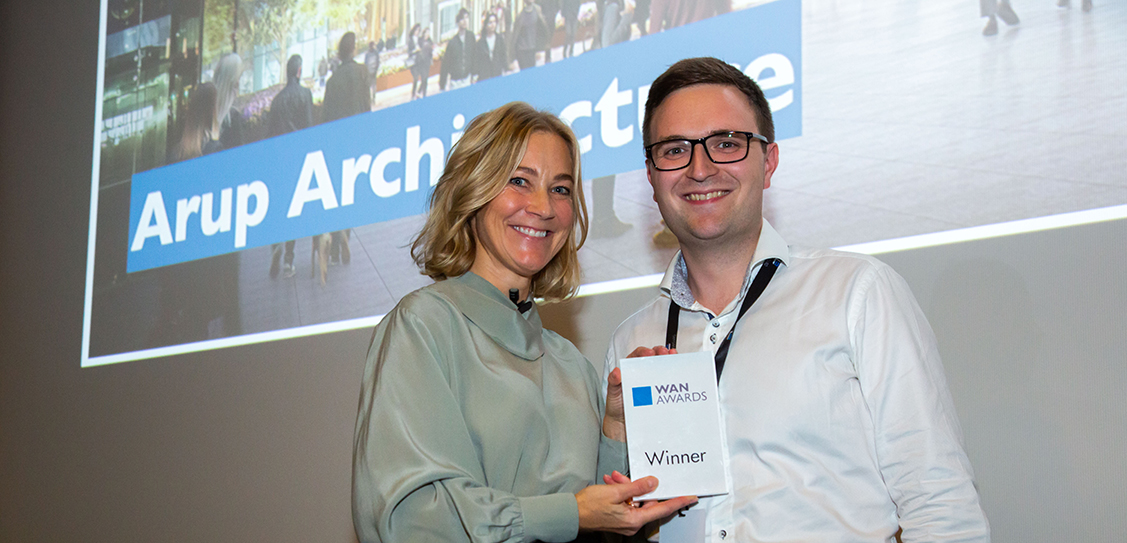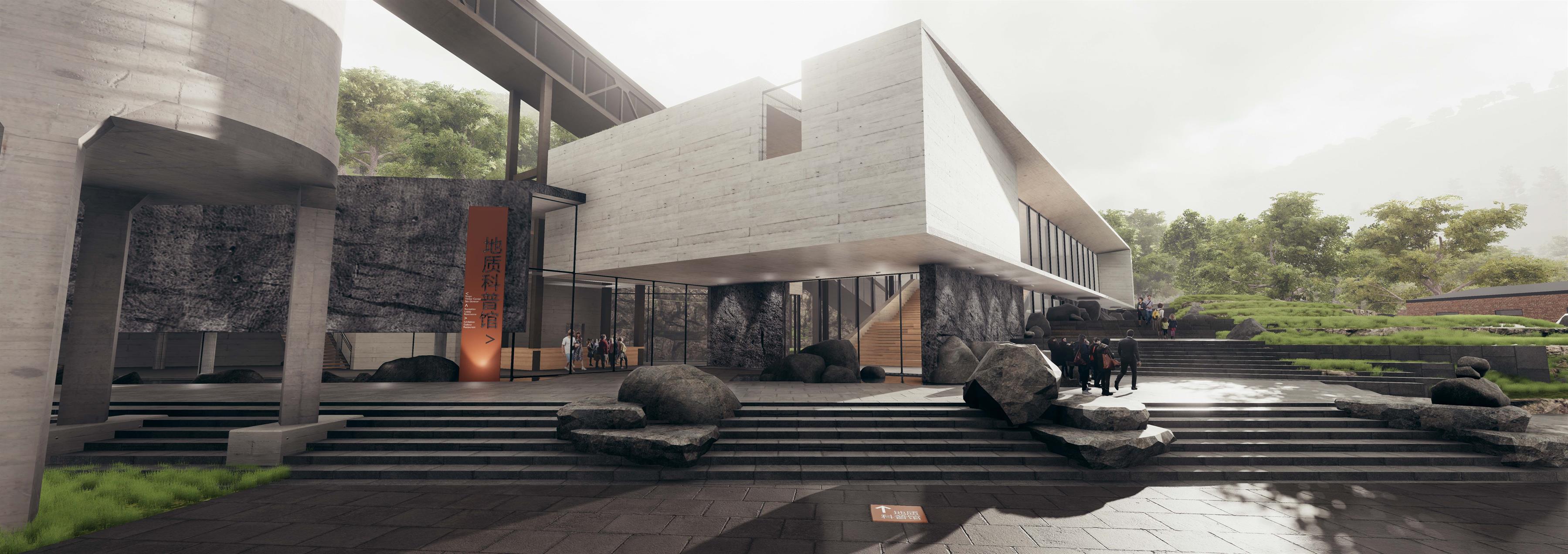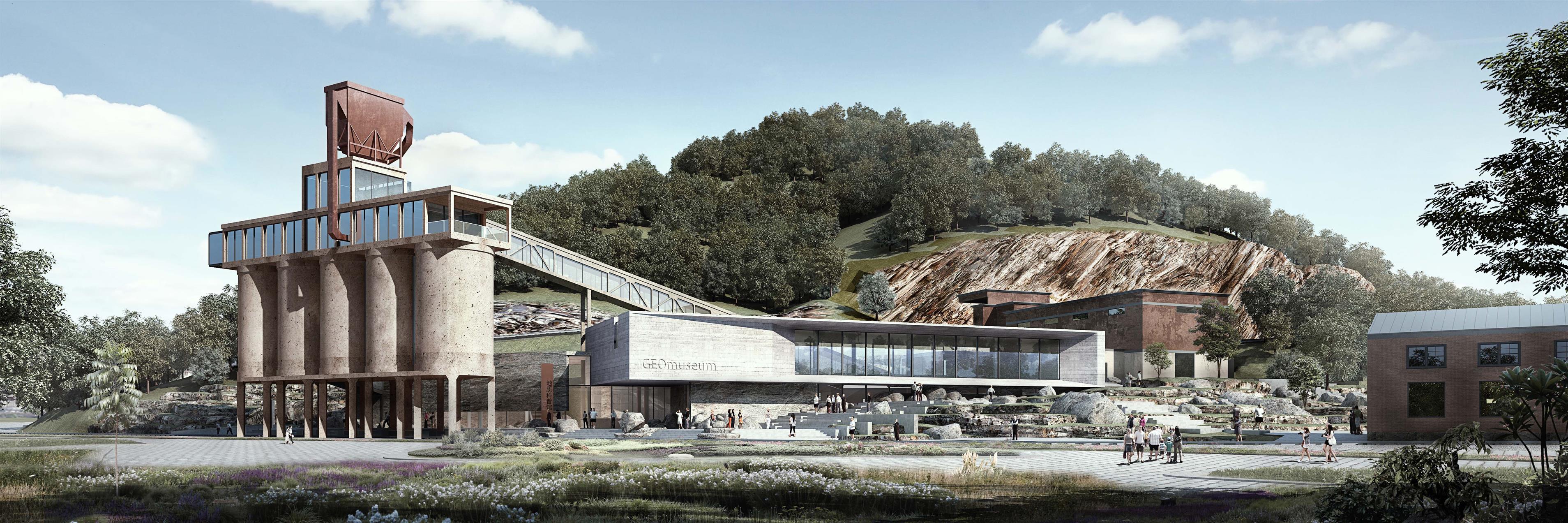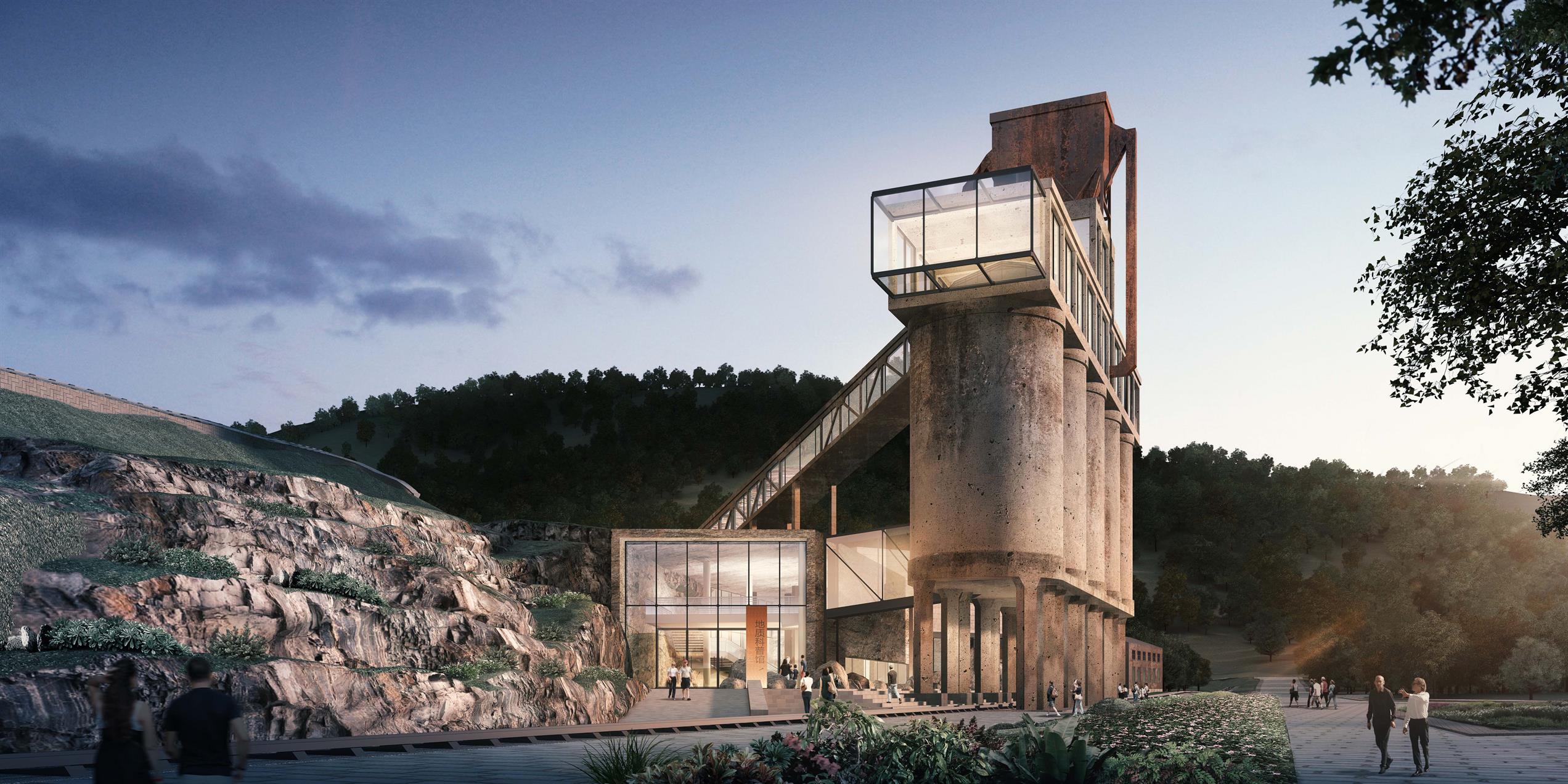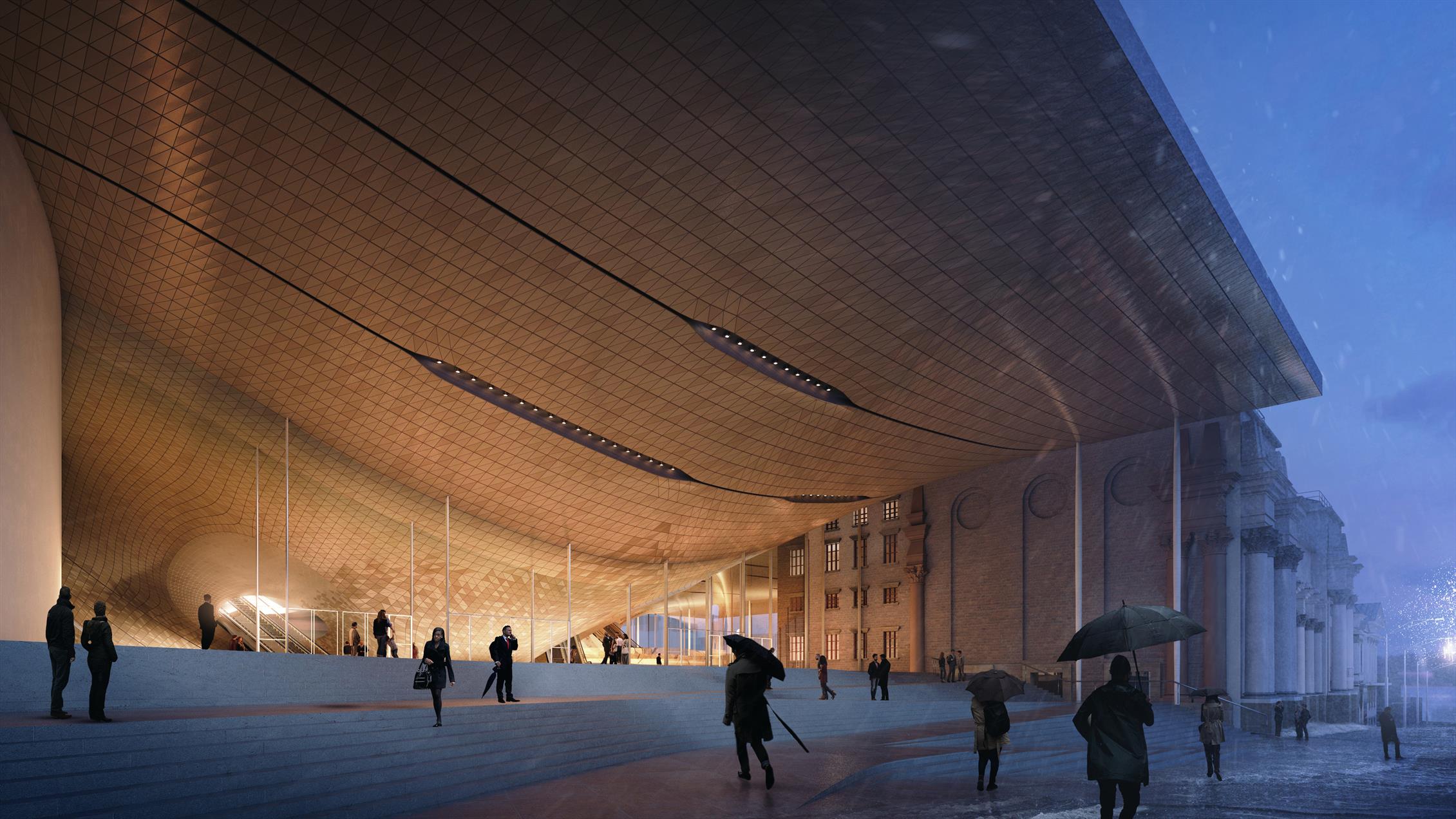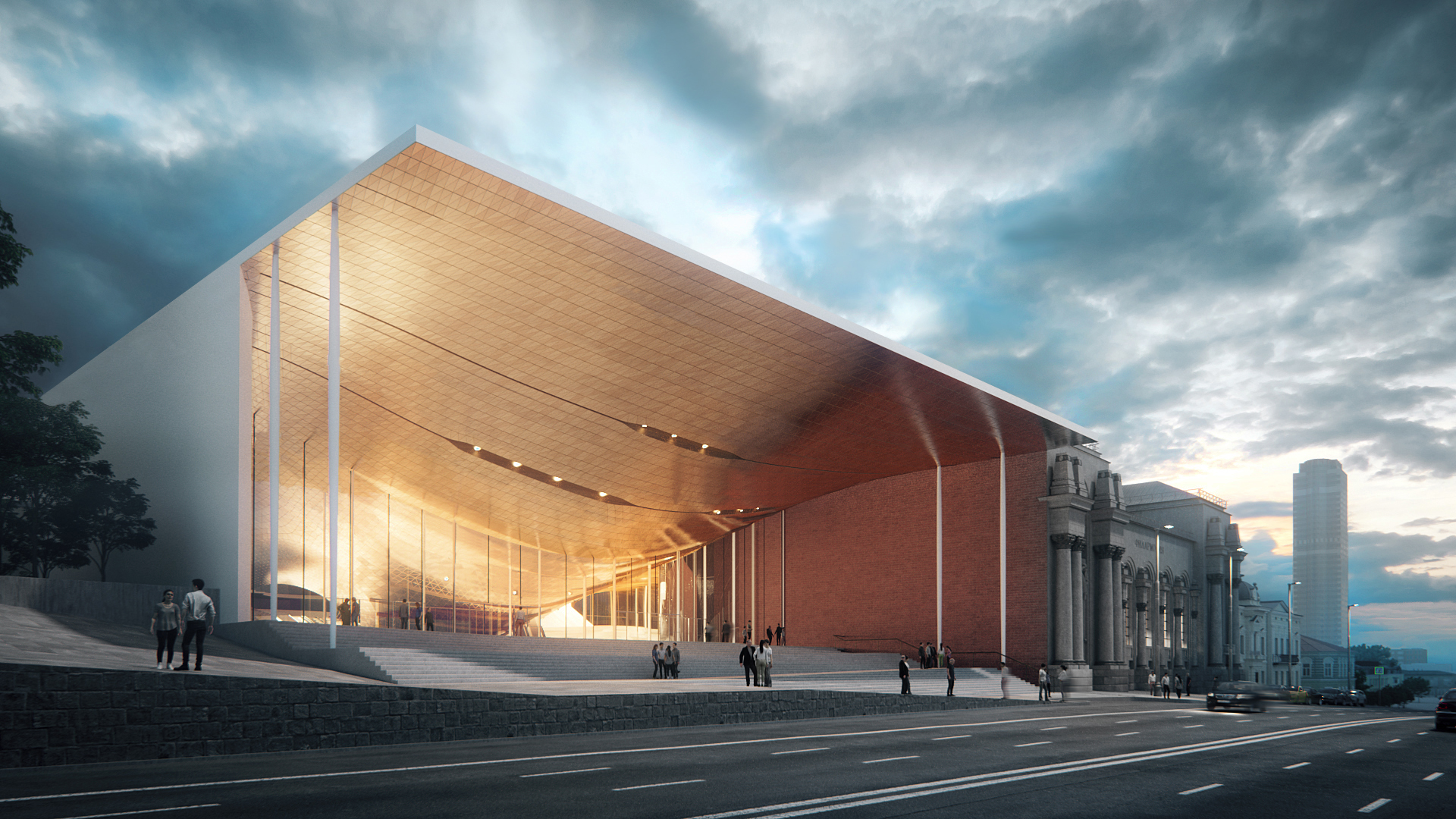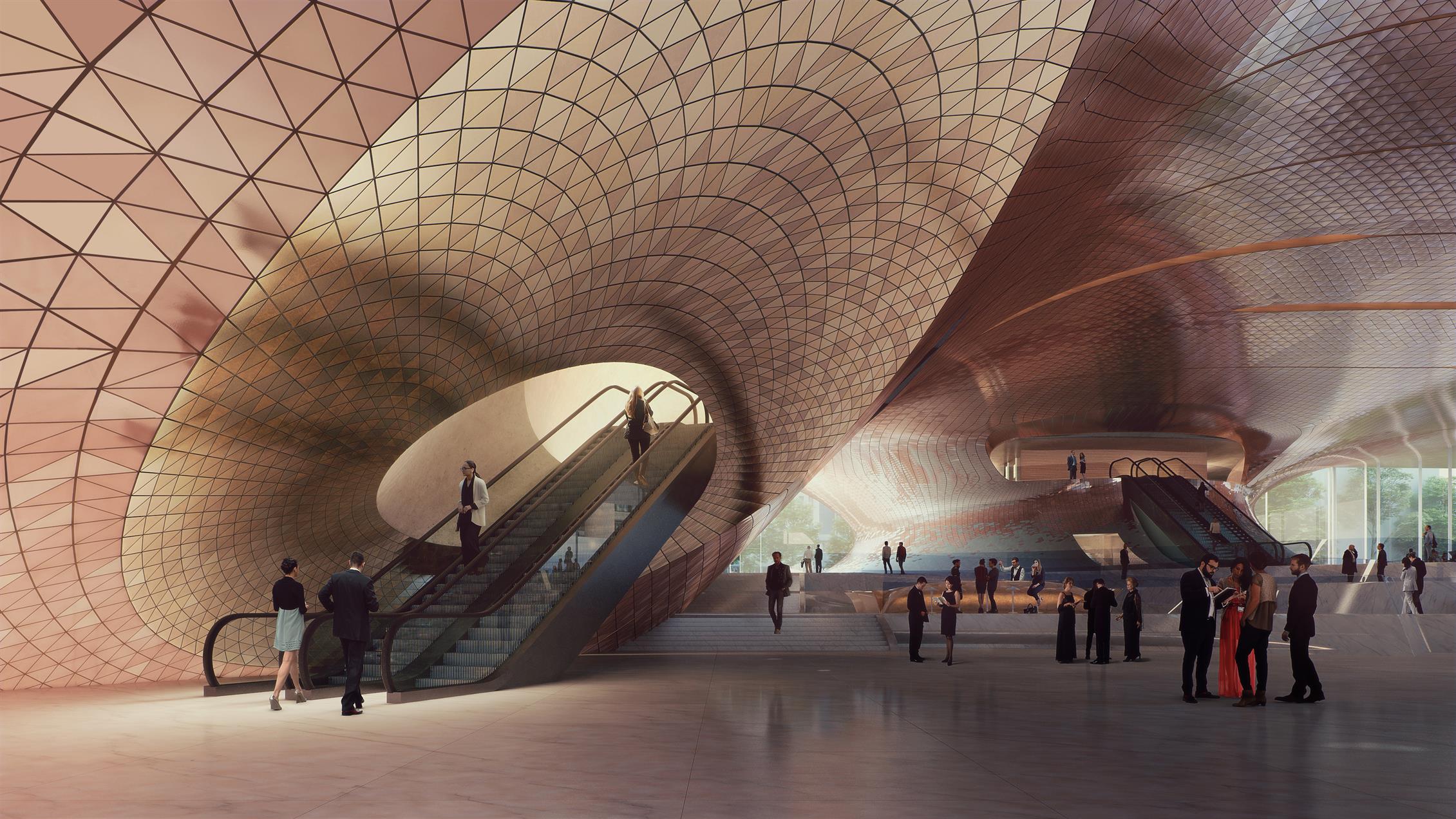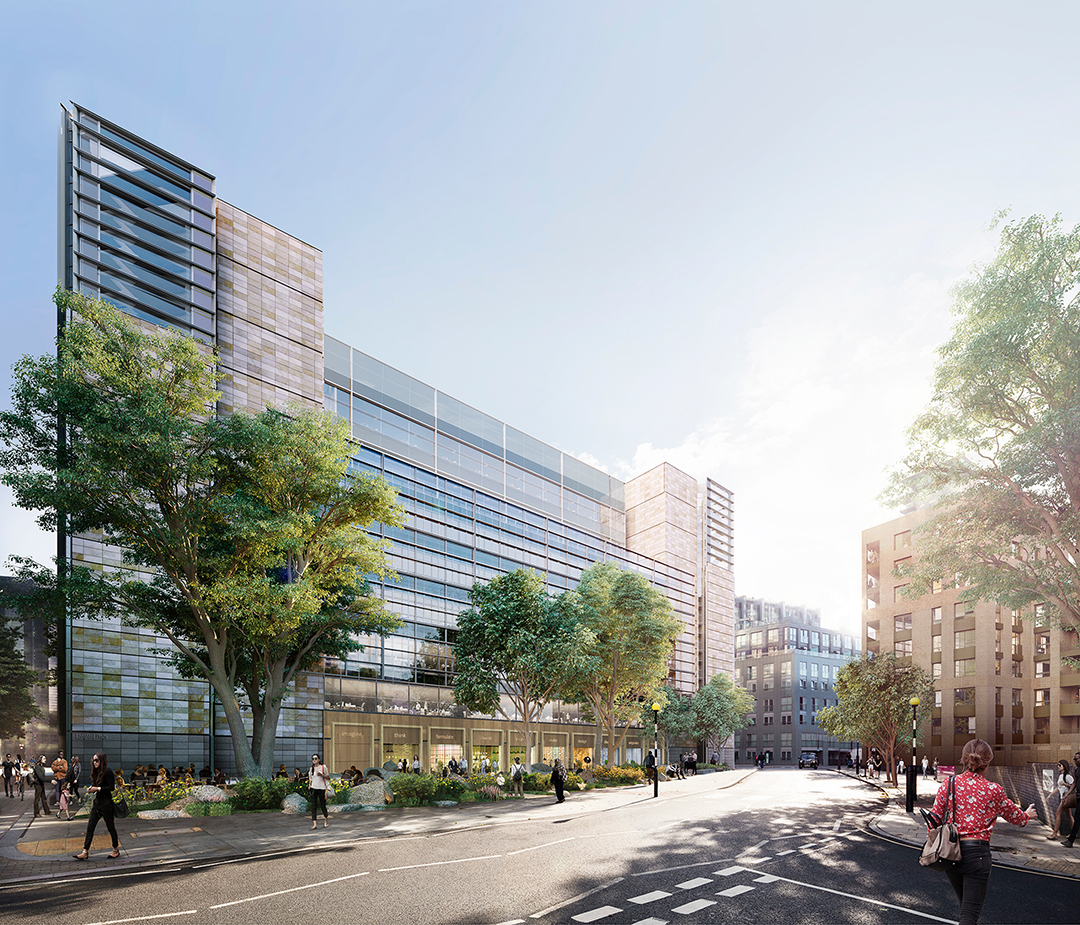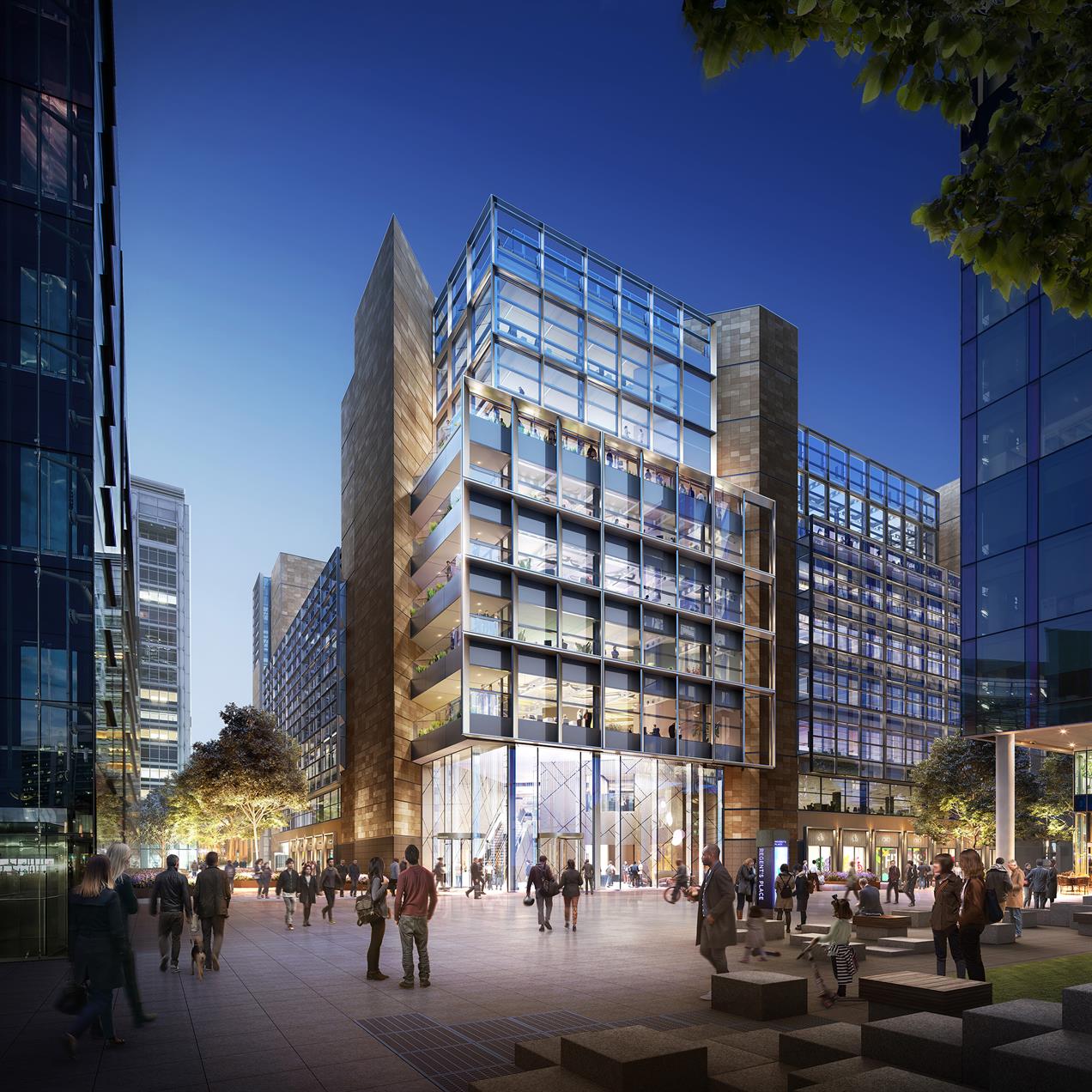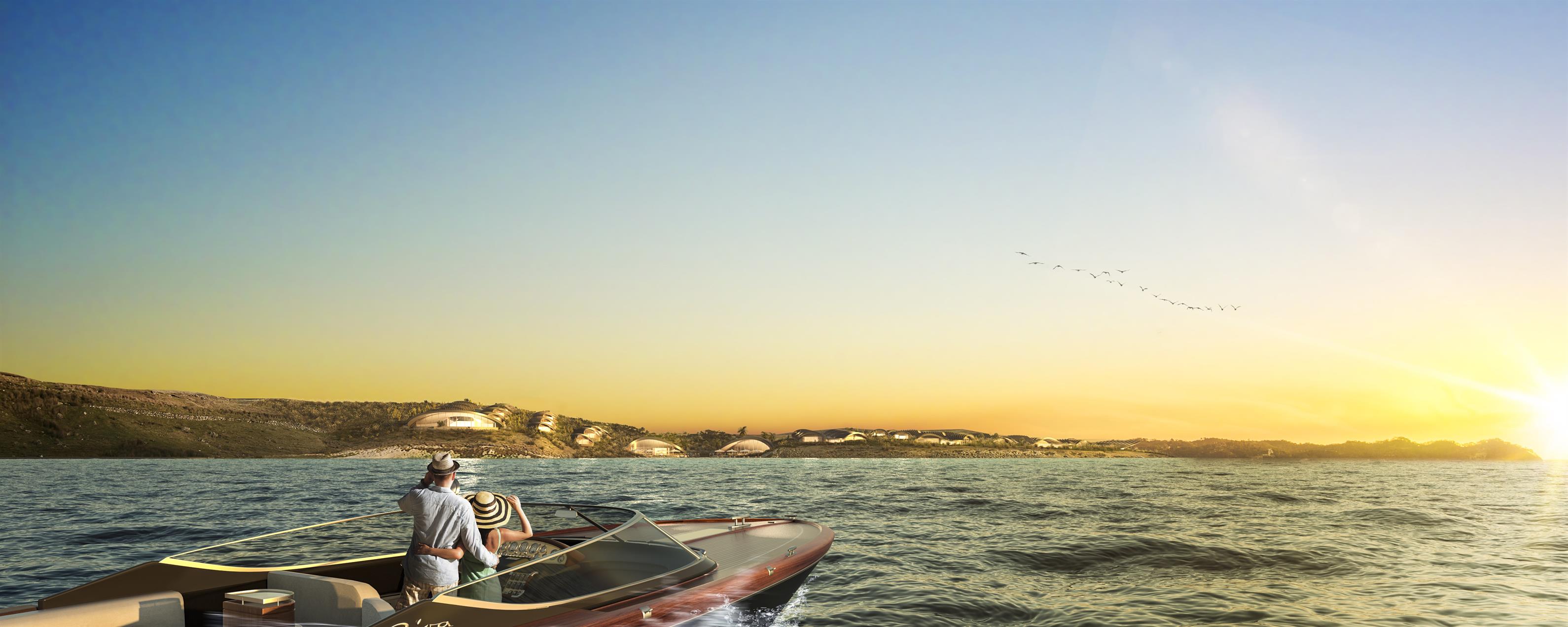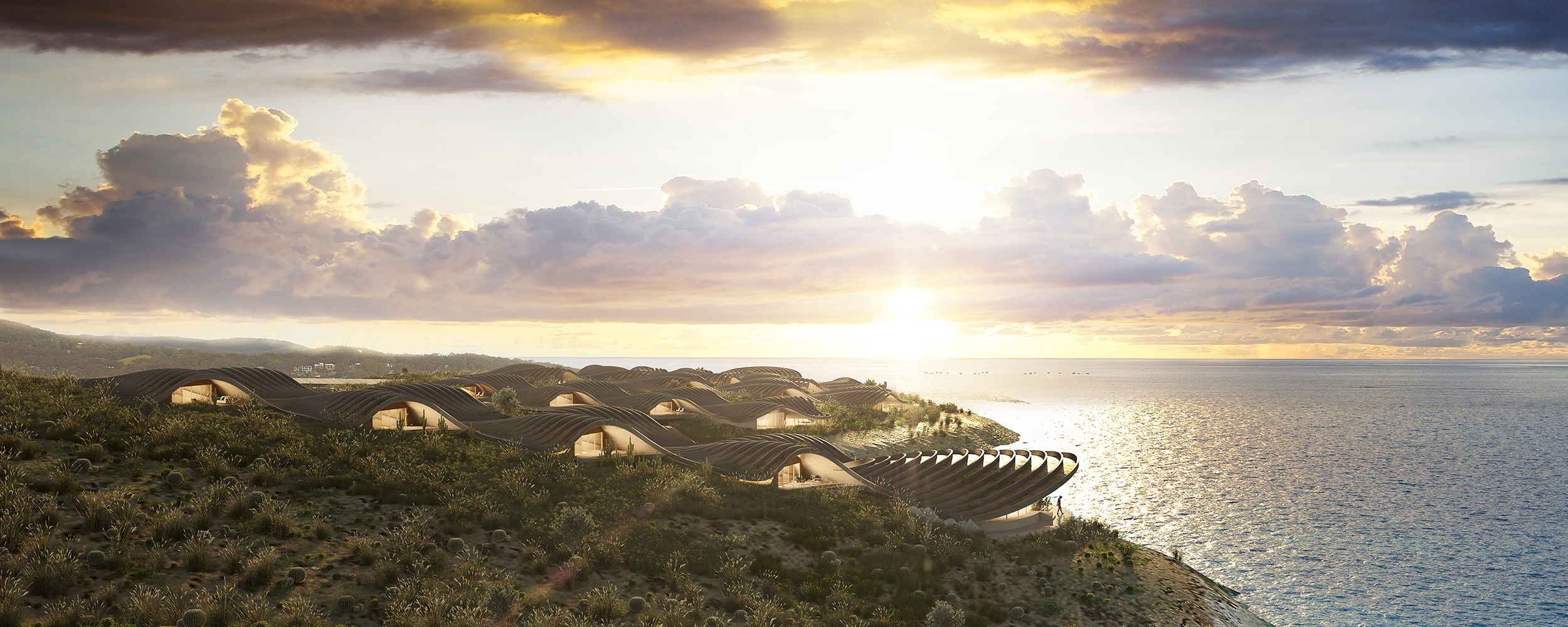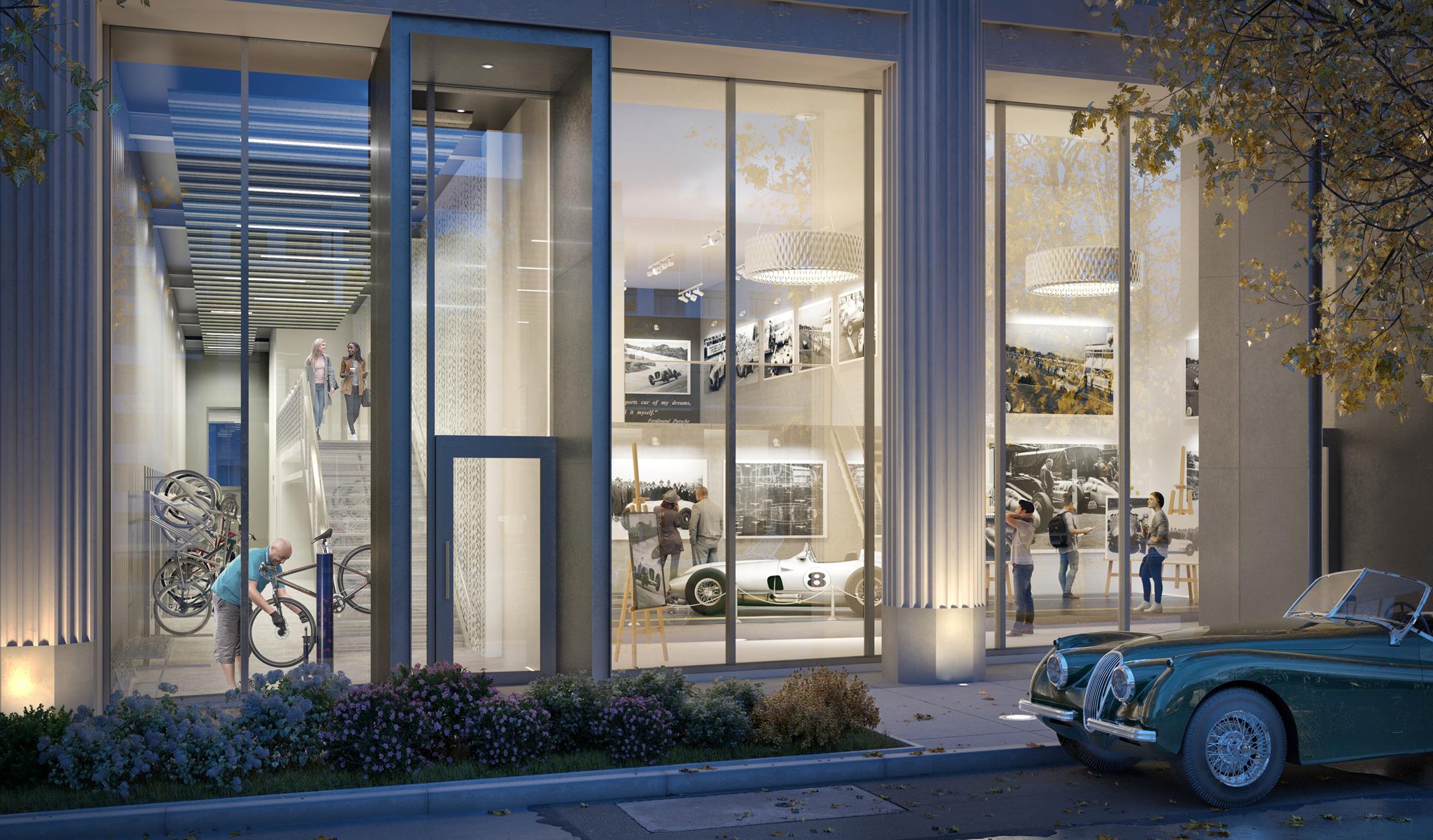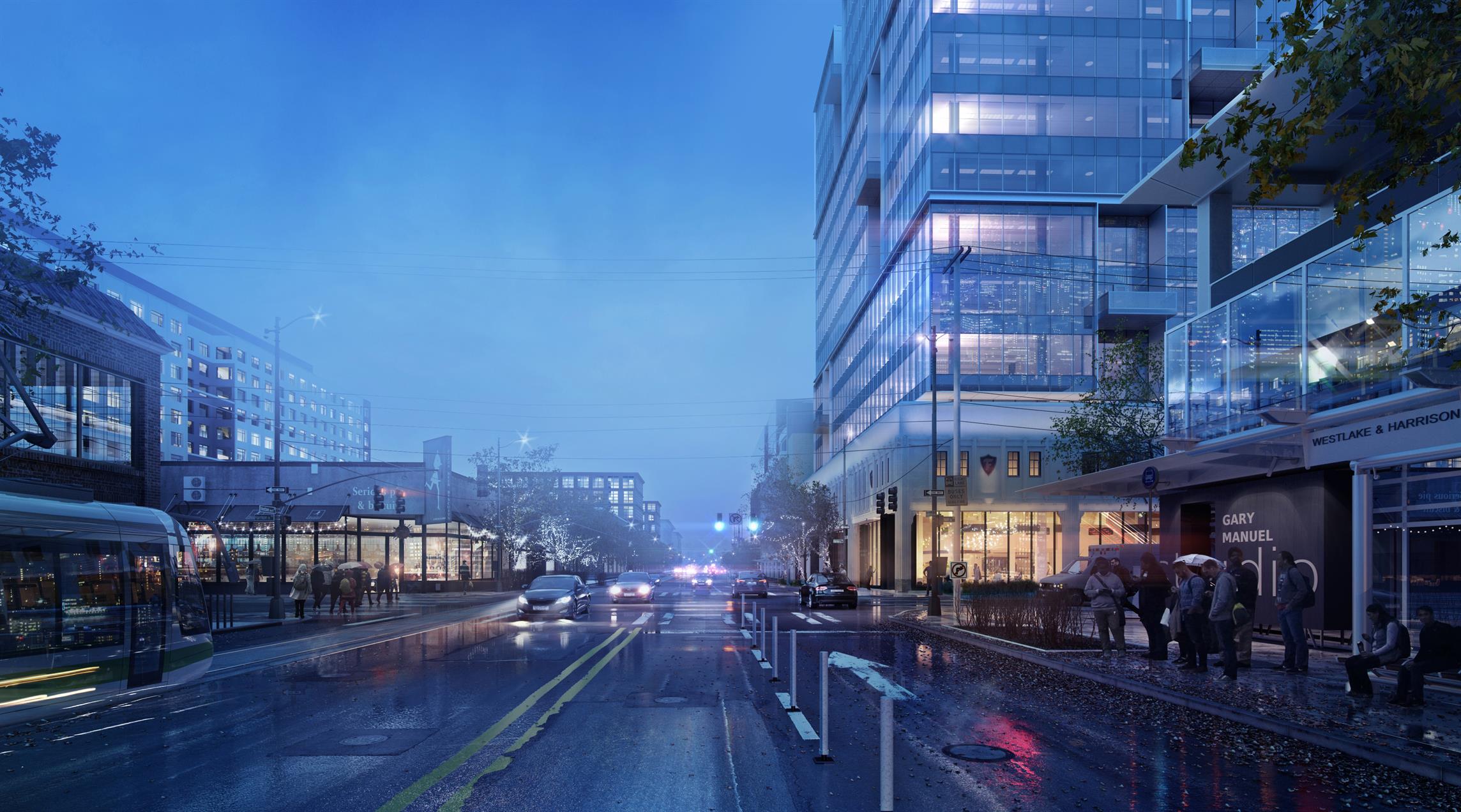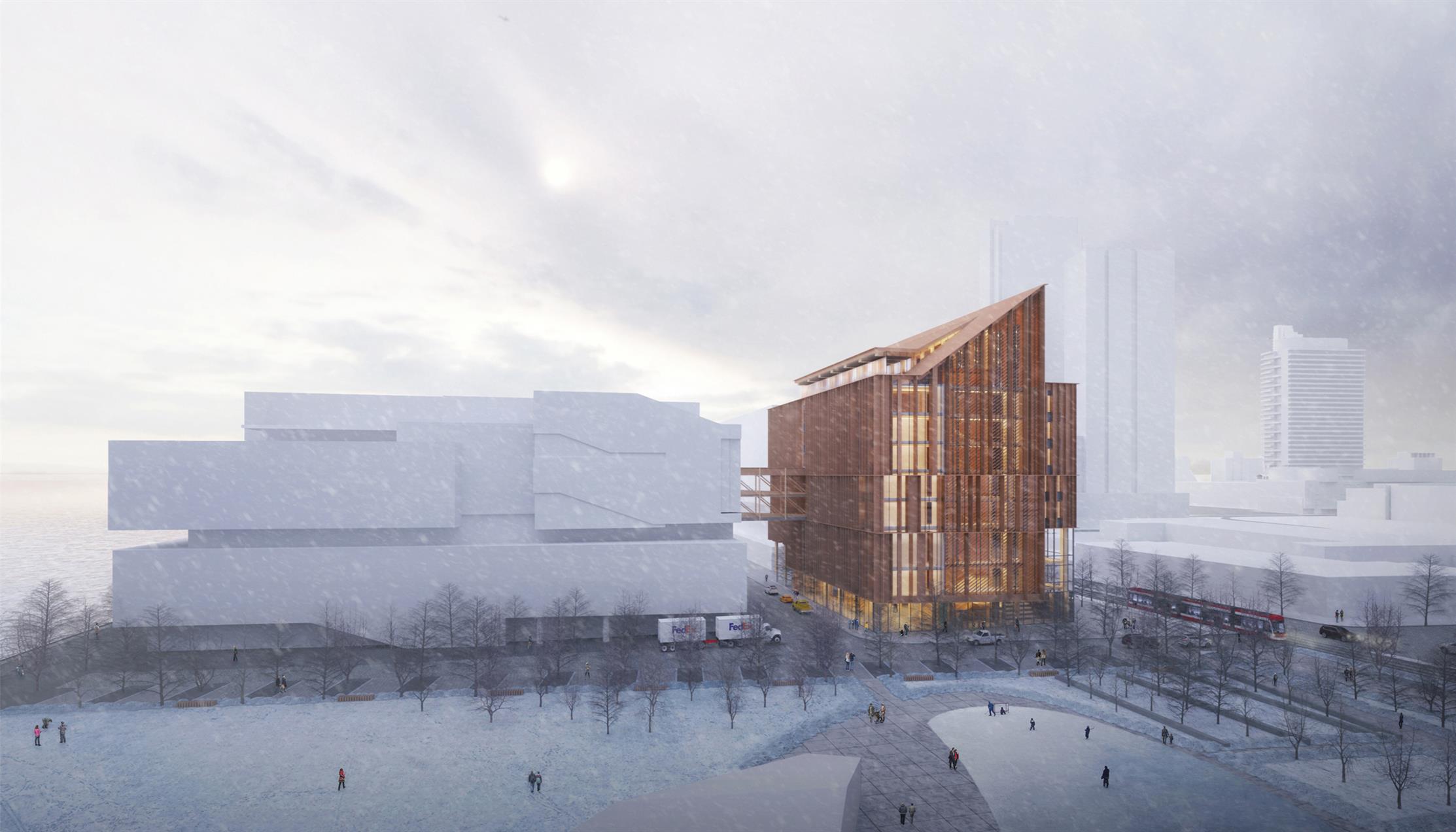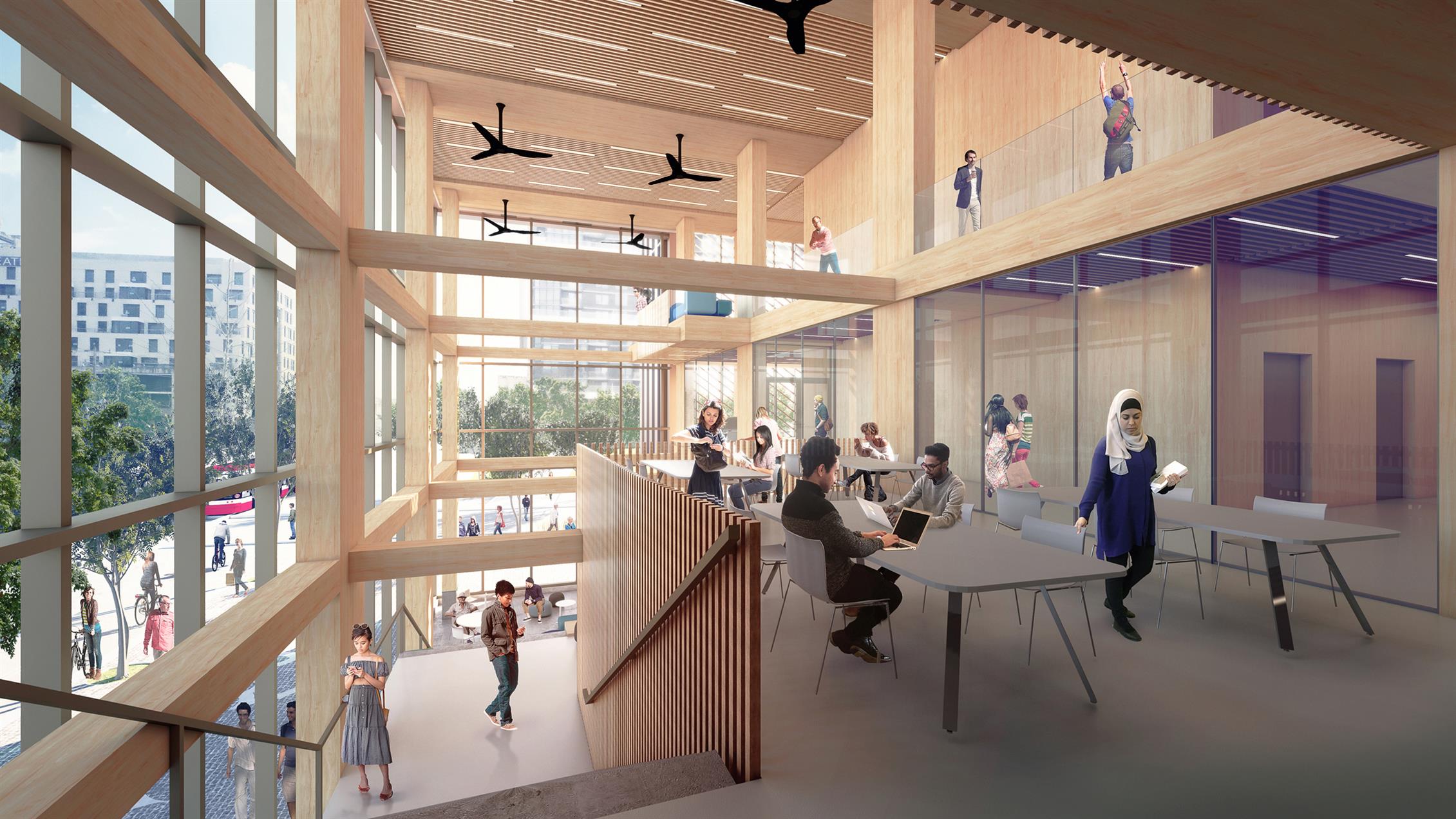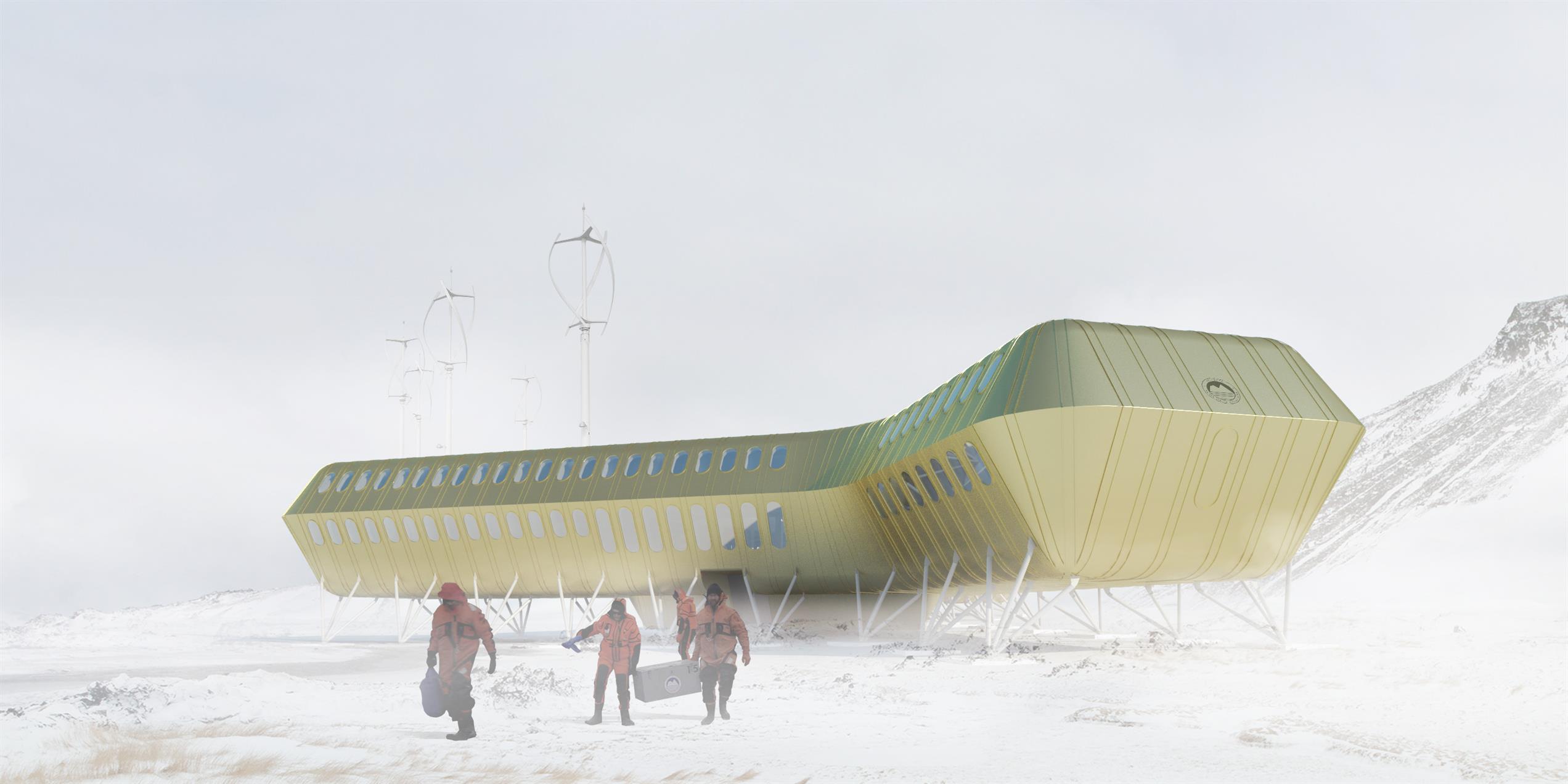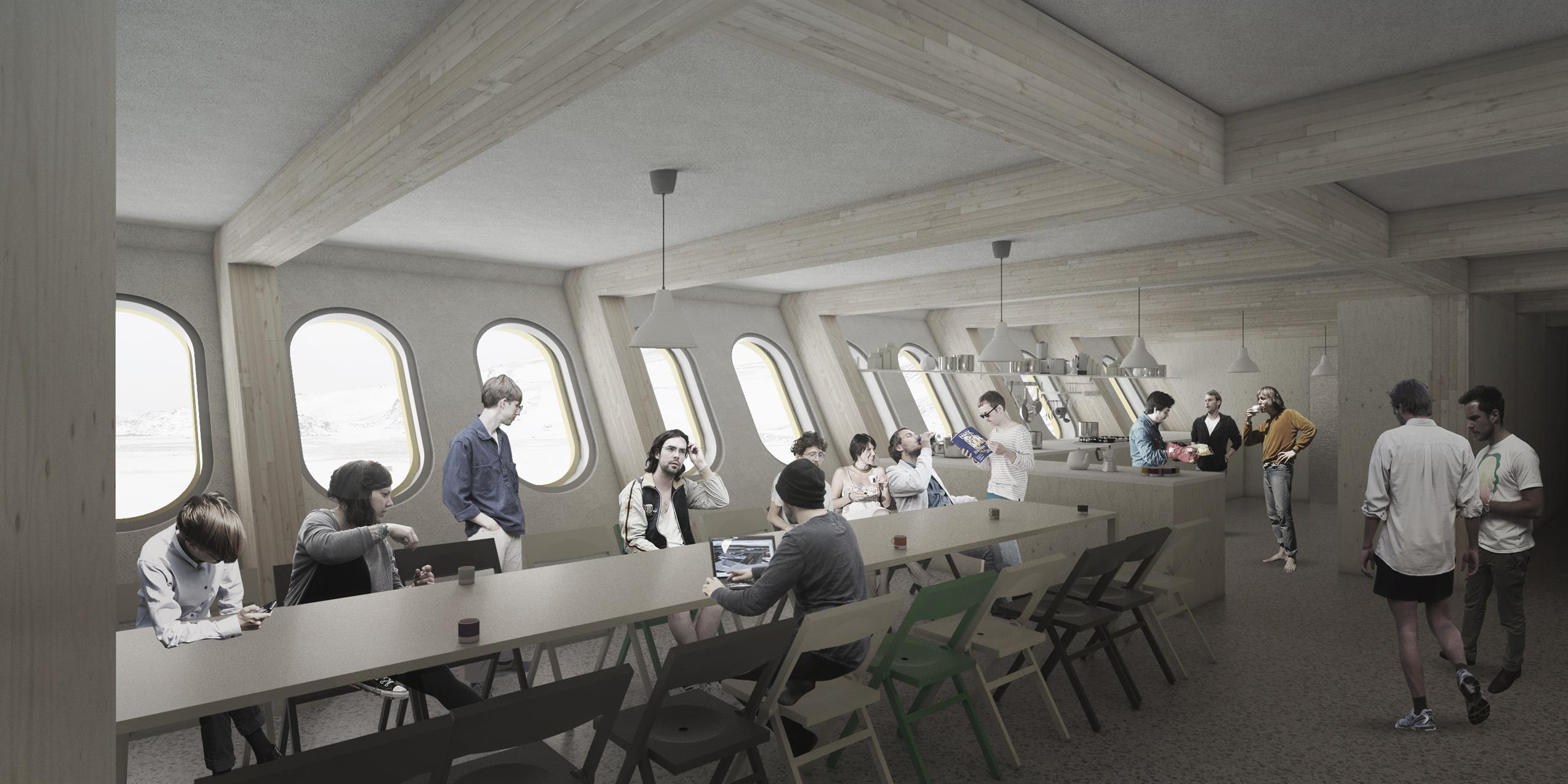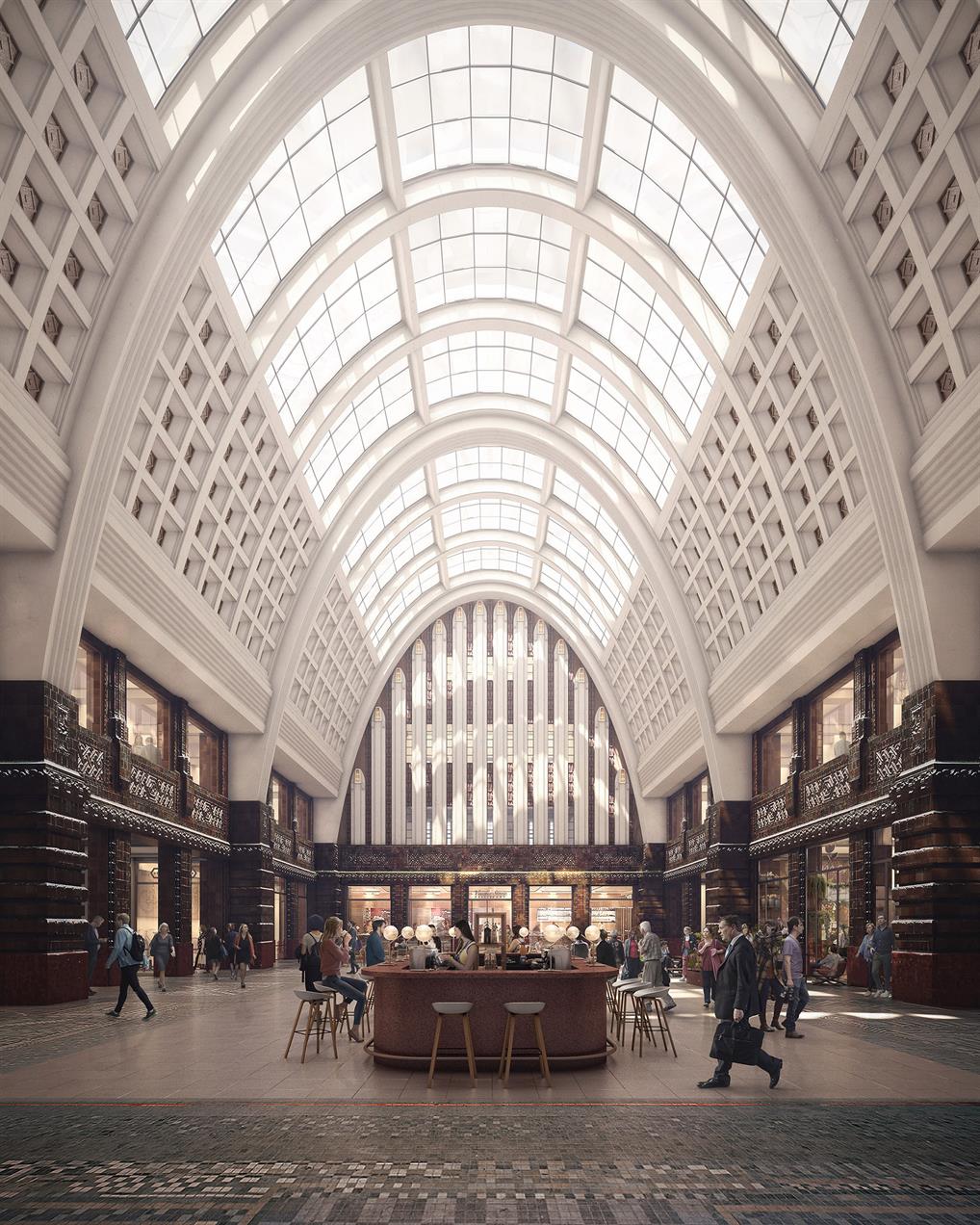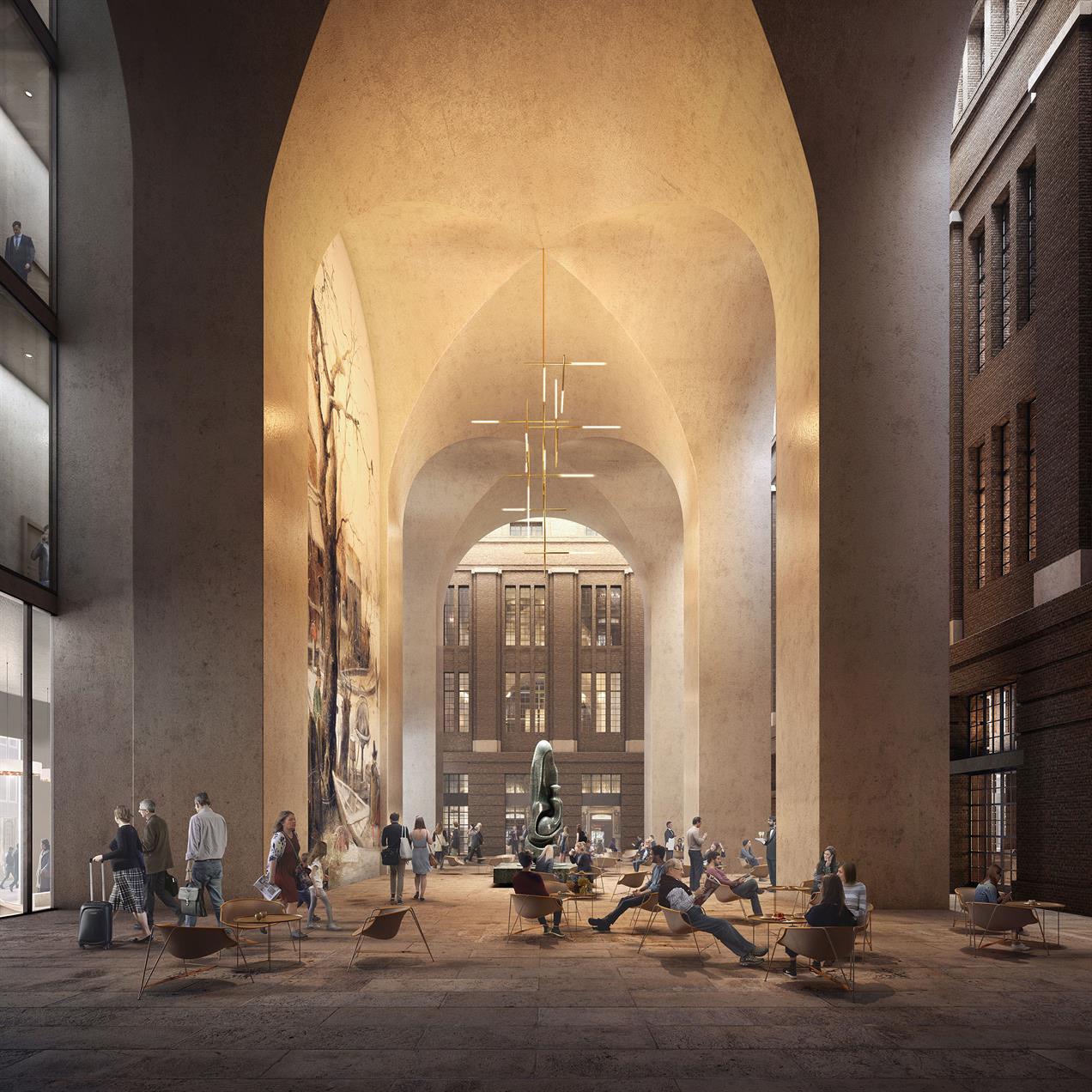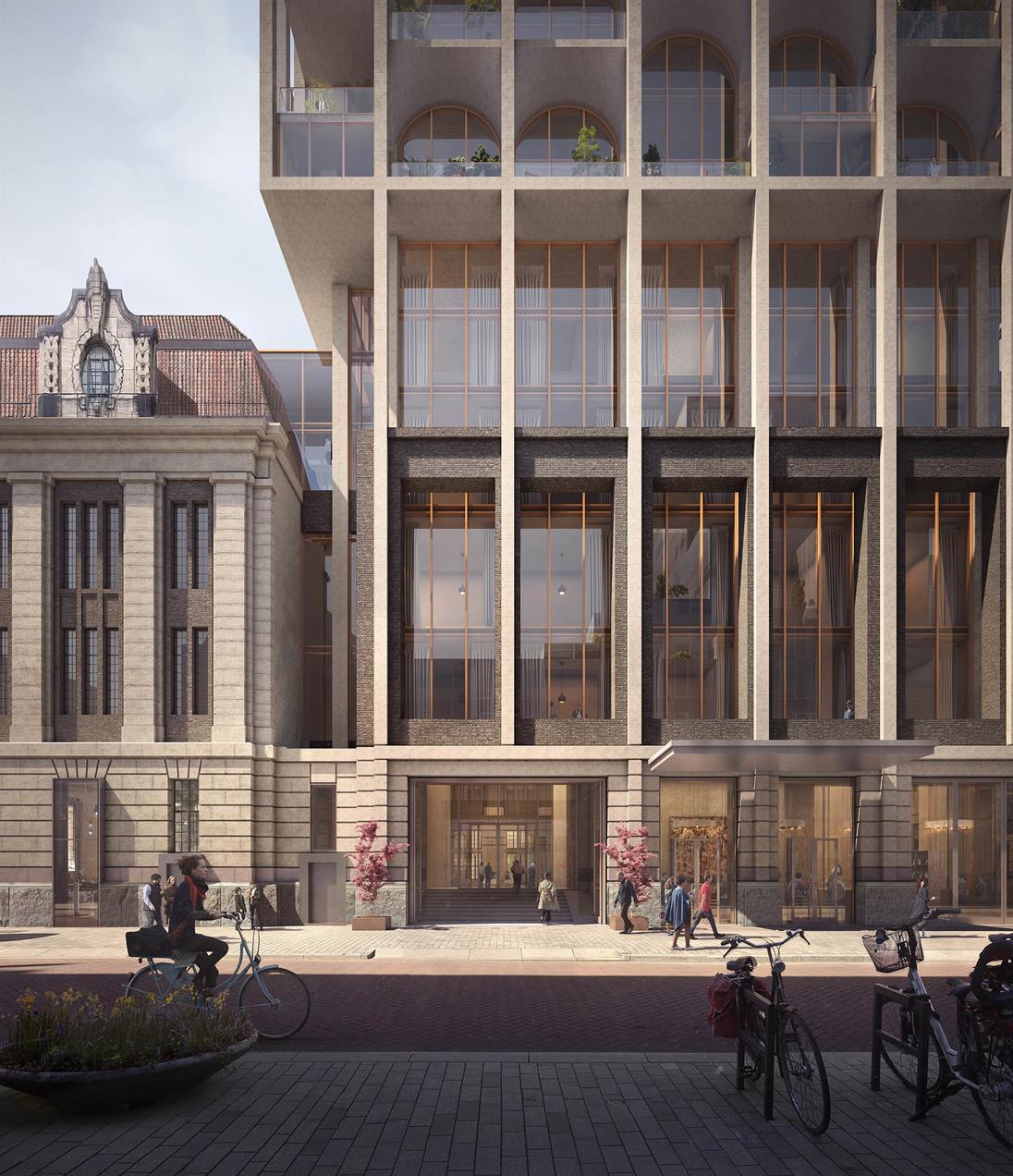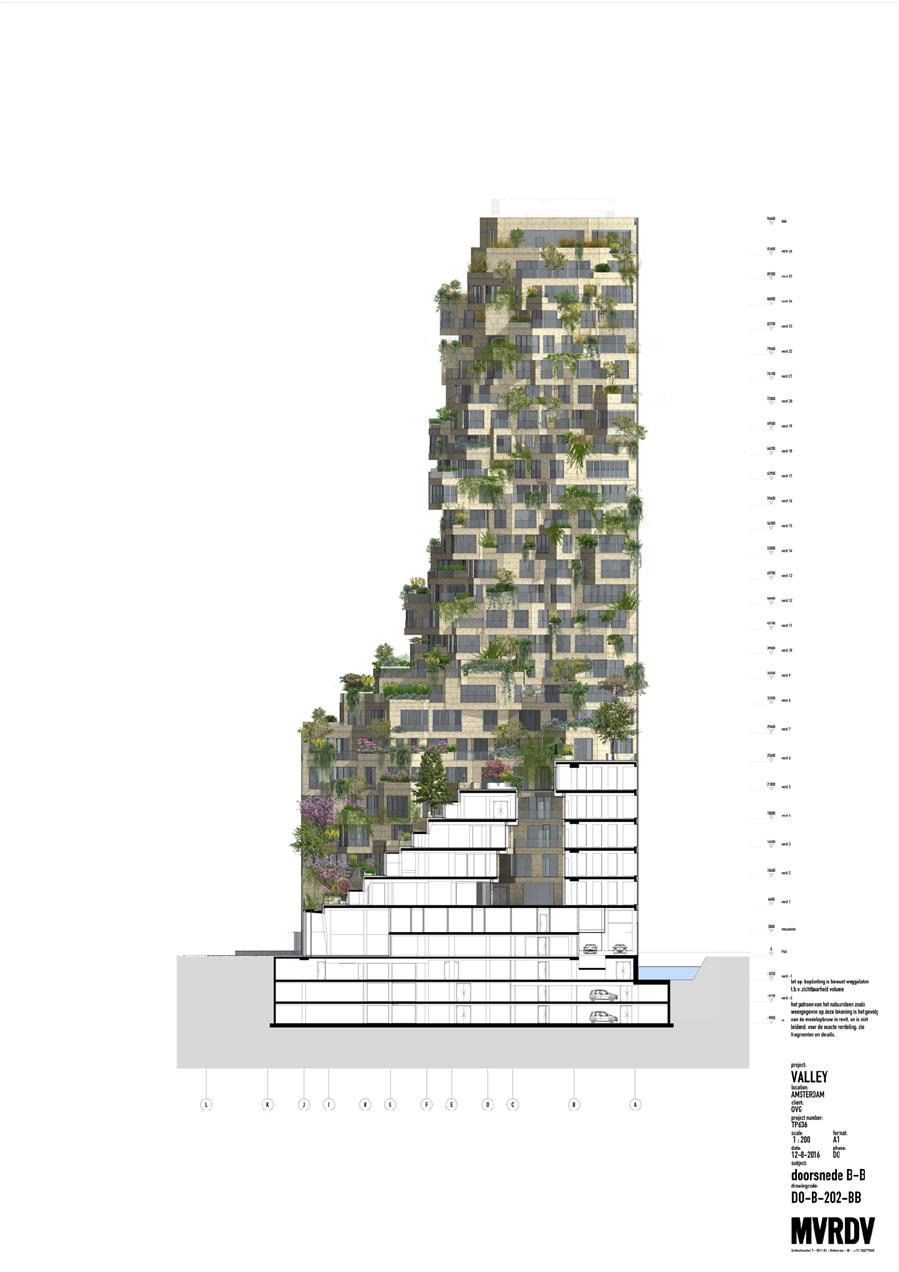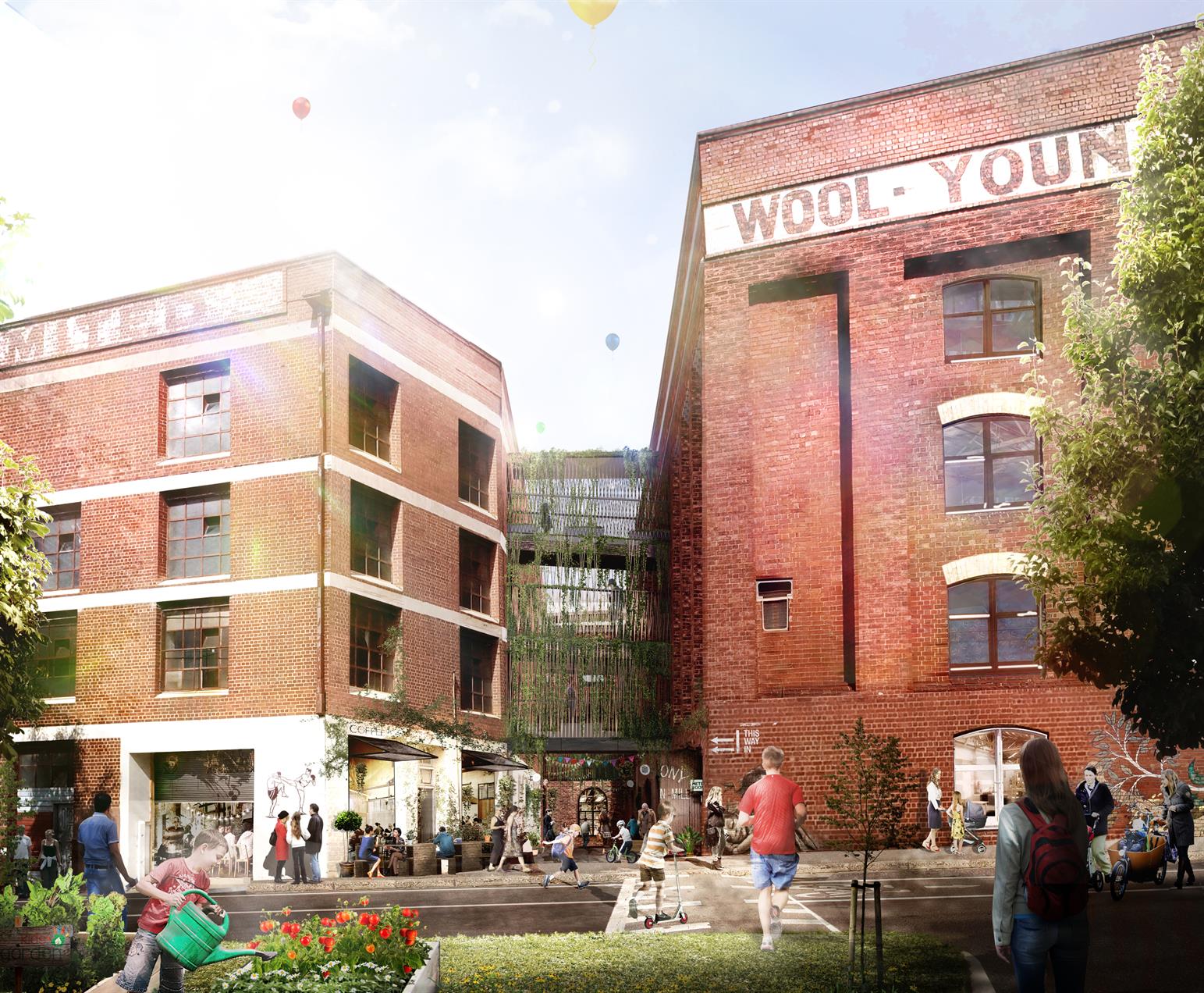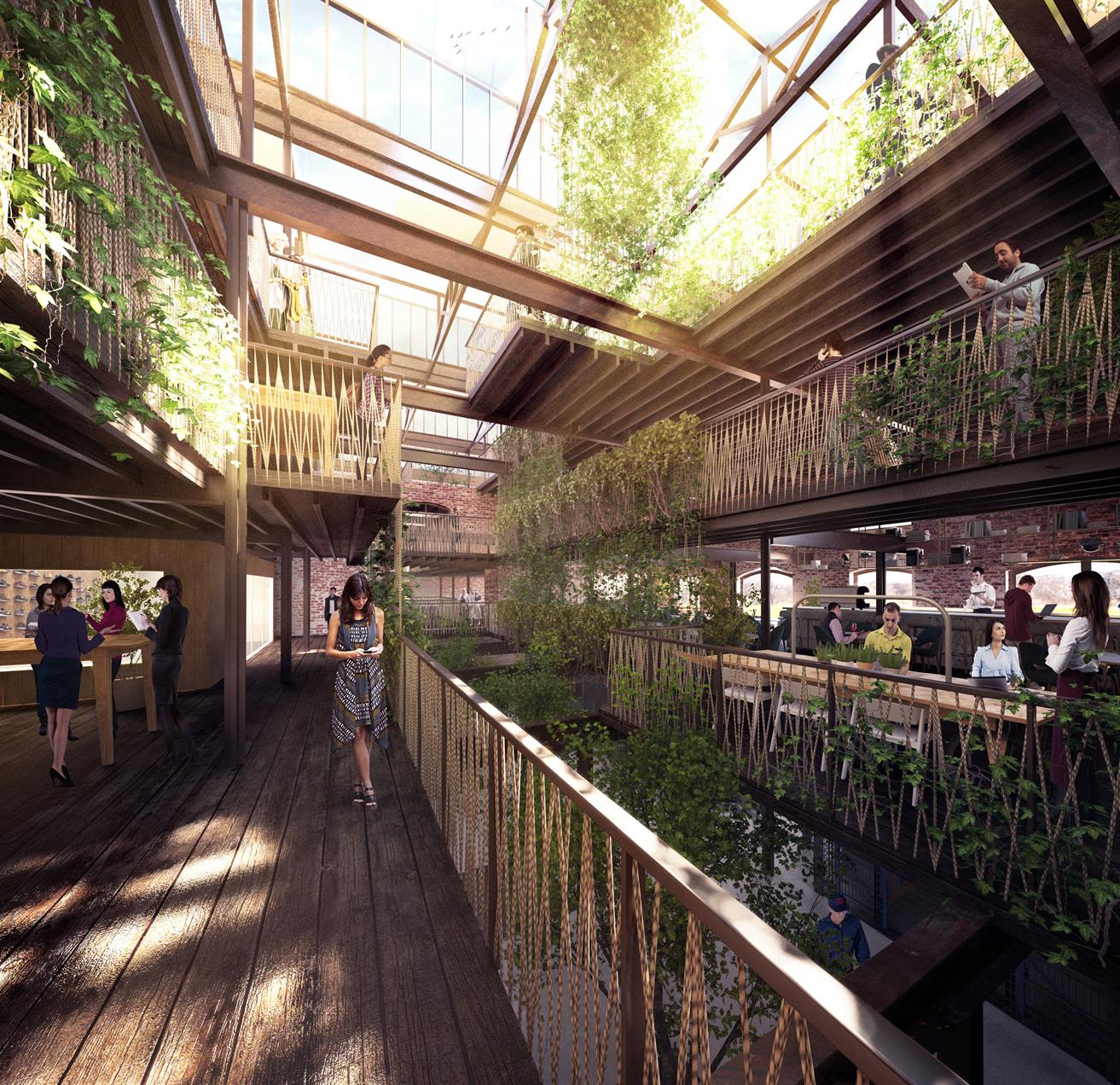Future Projects - Civic
Gold: MZA Architecture, Geo Museum & Science Center
Situated in the Nanjing Fangshan Mountains, this new national park is known as “The Cradle of Chinese Geology”. Until recently, the site has been used for processing concrete, and due to significant amounts of quarrying, much of the precious geology has been damaged. The new Geo Museum & Science Center doesn’t attempt to conceal the past but provides a clear glimpse into the history of this natural Chinese treasure.
To acknowledge the industrial heritage of this site, the existing processing buildings, the material conveyor belt, and the towering silos have been preserved and converted into exhibition spaces, a passenger conveying system, and sightseeing facilities respectively. A new, similarly scaled, building blends in seamlessly with the existing industrial context; its green roof melds into the hillside reducing the visual impact on this naturally beautiful site.
Inspired by the process of making building materials, the design tells a story; the building’s heavy base is composed of natural boulders, taken directly from nature, raw. The massing above is more refined as the boulders are shaped and cut to size, but still retain the character of rough, natural stone. Finally, the floating concrete mass atop is monolithic and pure, representing the highest level of refinement and polish that can be achieved using stone. Each distinct layer originates from the same source material, chunks of rocks that were once processed by the facility on site, emphasizing the concept of the transition from old to new, unrefined to polished, and ultimately chaos to order.
Silver: Chrofi + NBRS Architecture, Sutherland Entertainment Centre
The Sutherland Entertainment Centre holds an important place in the collective memory of the Sutherland community. Designed and built in the 1970s primarily as a musical venue, the then ‘Sutherland Civic Centre’ relied on an inward focus on its auditorium and a narrow public address to Eton Street. This was a time when buildings like this relied on a separation between inside and outside and where spaces such as the foyer had only one purpose. This was also long before the development of Peace Park to the building’s north.
Fast forward to the present day and what we now find is a 40-plus year old building which is in relatively good physical condition. Yet, as a modern day public venue, it must cater to a diversity of cultural and technical needs. It needs to have a more open outlook and offer more to its community, both in terms of its relationship with its immediate surrounds but also in its spatial flexibility.
Our proposal seeks to offer a new and more engaging address for the entertainment centre by virtue of a more friendly and integrated relationship with Peace Park. This speaks to an opportunity to reaffirm Peace Park as the civic heart of Sutherland. A place with stronger connections not only to already established civic institutions but also with future developments within Sutherland town centre.
Bronze: Zaha Hadid Architects, Sverdlovsk Philharmonic Concert Hall
Established in 1841, Sberbank is the market leader of the Russian banking and economic circulatory system. At the forefront of process innovations and social responsibility, over 70% of Russia’s population rely on Sberbank’s services.
The 262,000sqm technopark will become the bank's cradle of I.T innovations, accommodating 17,000 people working in Sberbank’s information technology and marketing departments. “These are the people who will be responsible for all the bank’s ‘substance’ – its technical content, its brains,” explained Sberbank President German Gref.
Home to the bank’s divisions that develop, implement and ensure the operation of process solutions and breakthrough technologies, Sberbank Technopark’s design evolved from detailed analysis of the varied work processes and arrangements within the bank’s technology and marketing departments.
Christos Passas, project director at Zaha Hadid Architects, said: “The necessity to innovate and collaborate within the workplace environment is fundamental to Sberbank’s operations. Technopark’s design reconfigures working relationships by adopting a holistic approach to create an inter-connected, multi-functional workplace ecology driven by the bank’s requirements for enhanced communication, interaction and diversification that promotes creativity and engagement.”
Considered to be Russia’s Silicon Valley, Skolkovo is Moscow's new centre for the laboratories and campuses of Russia’s fast developing IT, biomedical, energy, nuclear & space innovations.
Future Projects - Commercial
Gold: Arup Architecture, 1 Triton Square
Due for completion in 2020, 1 Triton Square will be one of the most sustainable Headquarters in the country. The building will become an exemplar piece of Total Architecture where the multidisciplinary team has challenged the status quo of conventional refurbishments to deliver an environmentally responsible, socially active building for its 4,000 users.
Consideration was given at the outset to maximise retention of both the existing structure and building fabric. This led to a proposal which evolved the original concept, reiterating the corner core placement; celebrating the floating façade screens as a primary part of each elevation; meticulous attention to the interfaces between materials and consistency of proportion across all scales.
By incorporating additional sustainable innovations, the building will produce 33% less carbon in construction and operation than a best practice new build alternative. This is a reduction of 57,000 tCO2e, equivalent to the carbon used to heat and power over 14,000 homes for a year.
The pedestrian experience has been dramatically improved by creating a double height spaces beneath each floating façade screen. A series of carefully scaled portico windows and entrances form views into the varied mix of publicly accessible ground floor uses.
1 Triton Square will become a healthy workplace with exceptional amenity, daylight and social connectivity. The reconfigured atrium is designed to incorporate satellite atria, breakout space and stairs between floors to encourage movement and interaction. Five generous terraces at level six will have a variety of uses from rest and contemplation to events and sporting activities.
Silver: Sordo Madaleno Arquitectos, Chablé Los Cabos
The project occupies a site enjoying sweeping views over the Gulf of California in Baja California Sur, among cacti, sinuous sand dunes and the sea. The organic architecture provides a sheltering function, and not as an accident, it is an echo of the topography, of the waves of the sea, and of the local flora and fauna. Each element emerges from and adapts to the terrain, as if the architecture had been dug out of the site.
A series of layout studies helped to make clear that the architectural part should be based on a branching system, to achieve an uninterrupted visual connection with the Sea of Cortez, and to achieve more space between each module to generate privacy.
These branches separate the rooms from the rest of the program, with the lobby entrance on the east side of the terrain and the distribution of the room modules and amenities closer to the sea; a spa and gymnasium on the south side and a fine dining restaurant crowning the north side.
The intention to construct a system of 46 independent room modules was to express a subtly cohesive order while not making it too dense. Each line of rooms is covered by a continuous, lightweight roof that undulates to create greater openness. The continuity of these roofs integrates the elements scattered across the terrain. In order to systematically order the complex, the standard rooms appear in the “stalk” of each branch while the presidential suites crown each branch.
Bronze: Perkins and Will, 400 Westlake
400 Westlake is a redevelopment of the two-story landmarked Firestone Tire building that is making a new kind of history as one of the most sustainable buildings of its size in the world. When redeveloped, the 1929 Art Deco building will generate more energy than it consumes, process water and waste on-site, use non-toxic materials and be resilient to certain natural disasters.
Sustainability: 400 Westlake is breaking sustainability barriers as the largest and tallest of five proposed buildings participating in Seattle’s Living Building pilot program and will be measured against stringent sustainability standards from the city and the International Living Future Institute (ILFI). It will be the first project to use the ILFI’s Off Site Renewable Exception to create a hyper-sustainable building that includes:
Net positive energy
Offsite renewable energy
Resilience and energy storage
Water reuse
Human health and wellness
Historic preservation: Terra cotta ornament on the south and west facades are characteristic of the Art Deco style. This, along with fluted piers, exterior windows, scalloped spandrel decorations, and original embossed Firestone crests will be meticulously restored. This is a story of sustainability in the broadest sense, economic, cultural, and environmental.
Program: The newly designed building includes an addition of a 13-storey office tower and two levels of underground parking. The ground floor of the historic Firestone building will offer 789sqm of retail space. The office tower is designed with a flexible open plan and side core to attract tech tenants.
Future Projects - Education
Gold: Moriyama & Teshima Architects and Acton Ostry Architects Inc., ‘The Arbour’ - George Brown College Tall Wood Building
The Arbour will be the home to the School of Technology and the Tall Wood Research Institute on George Brown College’s expanding Waterfront Campus. The opportunity to combine a learning institution within a developing urban neighbourhood sets fertile ground for Change, inspiring young minds to shape the future of the city.
This 10-storey tall wood, low carbon building will be the first of its kind in Ontario, featuring ecological innovation across its entire life cycle and be a model for 21st century smart, sustainable, green building innovation throughout Canada. The project brings an innovative structural approach that revolutionizes the future of large span tall wood construction by fully taking advantage of the spanning capabilities of cross laminated timber structures.
The construction of ‘The Arbour’ aligns with the City of Toronto’s intensification zones, industry and employment clusters and transit investments by enhancing connections to neighbouring developments and natural spaces offered by Sherbourne Common Park and the Water’s Edge Promenade. In direct contrast to the surrounding, dematerialized glass towers, this compact, versatile and light-footprint building is filled with warm, intimate and spaces for research, learning and student life that evoke a sense of purpose and permanence in the landscape.
Silver: Kuryłowicz & Associates, The Polish ‘Henry Arctowski’ Antarctic Station
The project of the new main building of 'Henry Arctowski' Antarctic station is to be located on Admiralty Bay, on the southern part of the island of King George in the South Shetland Archipelago, about 120km from the Antarctic coast.
The design of the station is shaped by a detailed functional program, the extreme environmental conditions of the site and by a modular construction strategy which has been imposed by site access restrictions. The result is a highly efficient tripartite ensemble which provides scientists with rational research space as well as a ‘home away from home’ atmosphere while the sinuous shape of the building’s exterior envelope seeks to capture the mystery of arctic life and articulate the thrill of exploration for its visitors.
Making a minimal impact on the environment, the station is elevated 3m over the landscape resembling an elegant floating vessel when viewed from the sea. This is done using a steel lattice sub structure which allows for the free flow of water, wind and snow underneath the station. The entrance has been situated in a central location, where it is protected from wind and high levels of snowfall. The building itself is orientated to reduce the impact of wind blowing from three main directions. In addition the building’s sectional profile acts as an upside-down ‘aircraft wing’, which uses incoming wind to keep the station pushed firmly to the ground. The project has undergone wind and snow analysis using 3D printed models.
Future Projects - Mixed Use
Gold: ODA New York, POST Rotterdam
Located in Rotterdam's city center, this historically important building stands as a testament to the inextinguishable spirit of Rotterdam. Built in 1916, it was one of the only original structures still standing after Rotterdam Blitz, the aerial bombardment that in 1940 leveled nearly all of the city’s historic core.
The new 150-meter tower will rise towards the rear of the Postkantoor and straddle the existing open courtyard at the Rodezand wing. The vaulted plinth of the tower will greatly enhance the experience of the courtyard, coupling it with the Great Hall of the Postkantoor. In a subtle nod to context, ODA mirrors the rhythm of five-meter spacing between columns on the Postkantoor’s facade in a stone grid that defines the tower. Designed with nonpareil windows, the Post tower shows openings that vary in size and shape to funnel daylight.
At the street level, the majestic Great Hal, a vaulted, 1916 marvel soaring 22.5 meters (almost 74 feet) in height, will undergo a faithful restoration to serve as the project’s public heart, fed by existing entrances at Coolsingel and Meent. A new entrance on Rodezand will render the hall accessible from all sides, and will connect with the building’s back courtyard to form a sweeping passageway.
Throughout the hall and courtyard space a slew of public amenities in the form of retail, galleries, restaurants and cafes, many with open sight lines to the Coolsingel and Rodezand streets, will add up to the city’s pedestrian experience.
Silver: MVRDV for EDGE Technologies, Valley
Over the past 20 years, the Zuidas area has developed into Amsterdam’s main international business centre, resulting in a reduced emphasis on residential development. The Valley is part of the city’s ambition to correct this by transforming the area into a more liveable and complete urban quarter, welcoming large amounts of residents and additional public facilities to the area over the next decade.
Valley sits on the border between residential and commercial functions. The concept of the building is rooted in this idea of transition, and MVRDV’s design emphasises the contrast between the corporate history and the more residential future of the Zuidas. The abundance of outdoor spaces and communal green areas promotes health and well-being while simultaneously contributing to the building’s green ambitions.
Valley includes three peaks of varying heights, with the tallest reaching to 100 metres and topped with a publicly accessible sky-bar, spread out over the top two stories, which offers panoramic views over Amsterdam. The building consists of 196 apartments, seven stories of offices, and three storeys of underground parking with 375 parking spots and various retail and cultural facilities. The project derives its name from the publicly accessible terraced valley that is spread out in-between its three mixed-use towers on the 4th and 5th levels. From street level, a pedestrianised path, running alongside retail functions, terraces, and roof gardens, leads up to this central public space. Internationally renowned landscape architect Piet Oudolf designed all of the Valley's vegetation, focusing on a year-round green appearance.
Bronze: Woods Bagot, Younghusband Wool Store Redevelopment
The Younghusband Wool Store Redevelopment sets a new benchmark for adaptive reuse projects by challenging the typical approach to property redevelopment. Guided by the principles of community, sustainability and heritage, the mixed-use rejuvenation respects the rich character of the community and historical precinct.
Located 4km north of Melbourne’s city business district, the Younghusband site consists of a series of large-scale industrial red brick buildings that were built over a period of 60 years from the turn of the 20th century. Extending over two blocks and connected by a bluestone laneway, the space is centred on a wool store built in 1906.
Spanning a 55,000sqm across five levels the sheer scale of the precinct likens it an urban design project as much as an architectural challenge. Employing a ‘touch lightly’ design sensibility that keeps what can be kept and removes only what needs to be removed, the design approach pays deep respect to the site’s unique personality.
Home to a lively group of small e-commerce start-ups, artists, event organisers and recording studios, the Younghusband community is creative and socially minded. Construction of the first stage will welcome home the community and allow the space to thrive with the addition of retail and amenity to support this. From a brewery to cafes and parking spaces for 370 bicycles a thriving hub will be created around the precincts 'town centre'.

